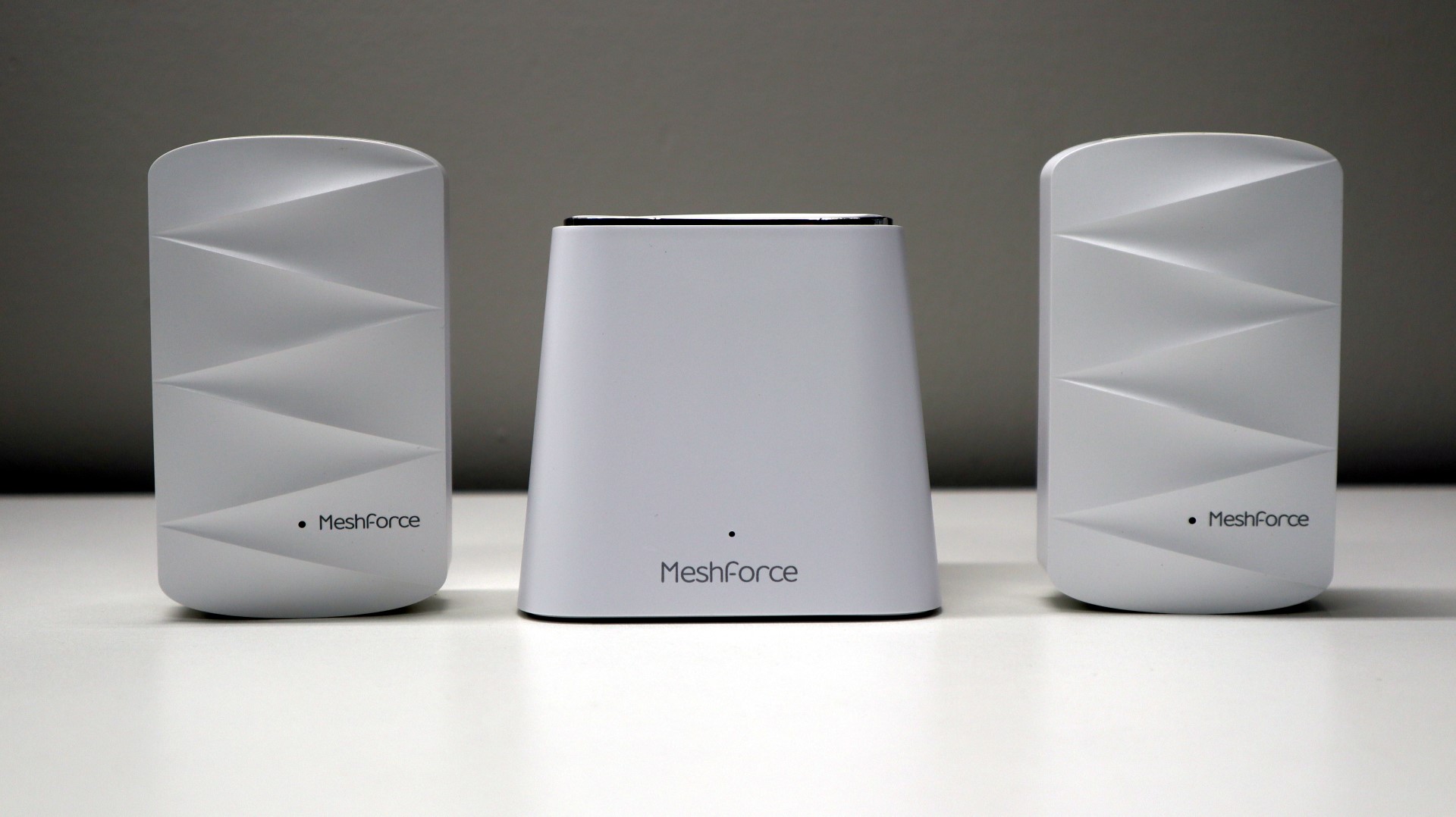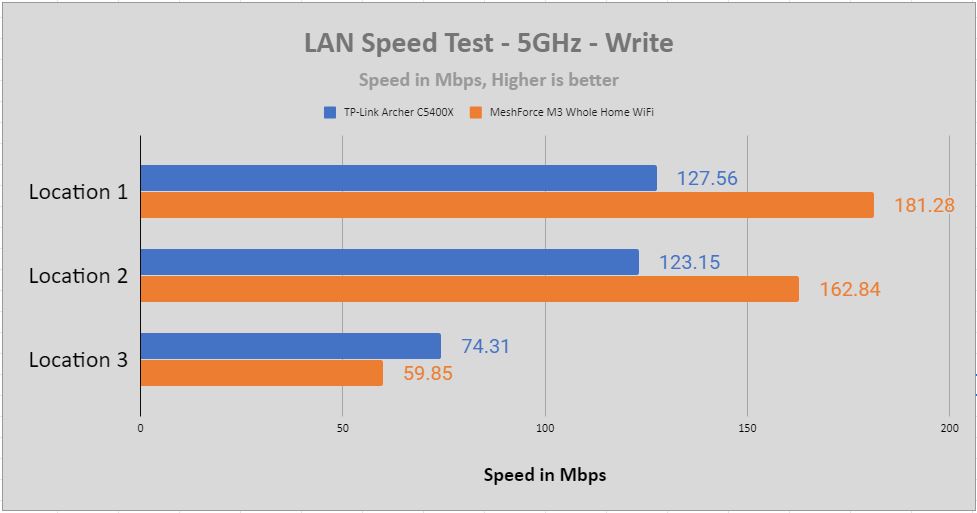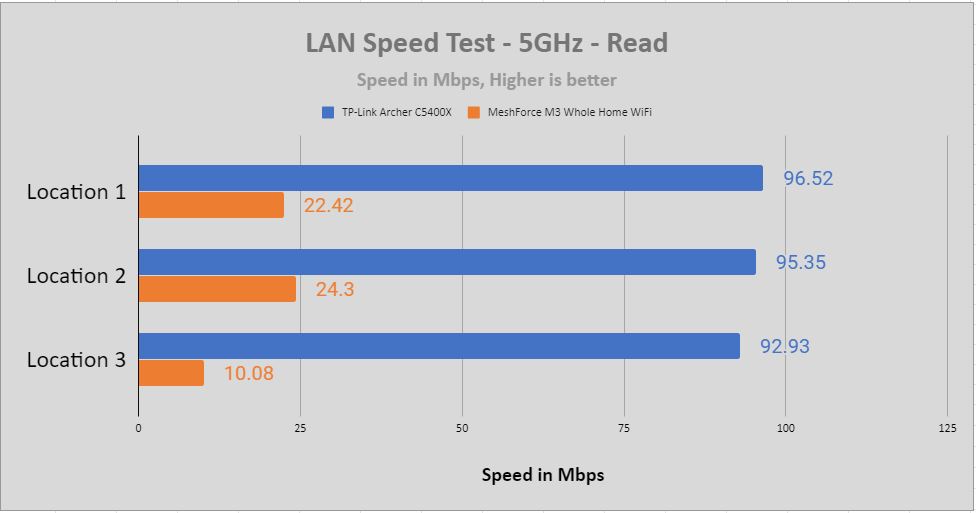Performance Testing
The MeshForce M3 Whole Home WiFi System does not allow you to configure the 2.4GHz and 5GHz bands separately, so we will be at the mercy of the system to choose the best network for our testing. We did find that the mesh system always provided us with a connection to the 5GHz network, so that is what we will be testing with. Also, each M3 Dot unit is setup to use the wireless backhaul to the main M3 unit, as opposed to the optional gigabit Ethernet backhaul. This option was chosen for two reasons; ease of setup and lack of Ethernet connections in all testing locations. A wired backhaul will definitely provide a more robust and performance-oriented network, as the M3 Dots could take advantage of their gigabit Ethernet connections for increased speed and stability.
We will be using the LAN Speed Test client in conjunction with another device on our network that is running the LST server. LST is configured to use a 100MB test file to ensure a sizable amount of data is utilized in each test. Each test is performed three times and then averaged to account for slight variances in our process.
Our wireless test client is configured with an Intel Dual Band Wireless-AC 3165 (1×1) adapter, which will unfortunately limit the amount of throughput available to the tested systems. Our wireless testing will be performed on the 5GHz network, with the same server in operation for LST. Three different locations will be tested; right next to the M3 WiFi Point in the basement, the first floor living area, and the second floor main bedroom. The closest location gives an accurate representation for devices in the direct vicinity and in the basement living space, while the first and second floor tests show results for more remote locations. For comparison, we have also tested with a TP-Link Archer C5400X Gaming Router.
We will be testing not only the performance of the M3 WiFi point as a standalone unit, but also as a mesh system. The standalone unit, as well as the full mesh system, will be tested in the following locations:
– Location 1: Next to router (M3 Base Unit)
– Location 2: Main floor living area (M3 Dot, wireless backhaul)
– Location 3: Second floor main bedroom (M3 Dot, wireless backhaul)
Write
Here we see that when our test system was in the closest two locations, the MeshForce M3 Mesh WiFi system was able to outperform the C5400X in the LAN Speed Test Write portion of our testing. Moving furthest away from the main M3 unit, and relying on the M3 Dot closest to us resulted in the M3 system being beaten out. Now we aren’t exactly sure how the M3 mesh system is configured, because it could be possible that the M3 Dot in Location 3 was first connecting to the M3 Dot in Location 2, and then communicating with the M3 base unit in Location 1, as opposed to Location 3 talking directly to Location 1. Either way, we were impressed with the signal strength we saw on our test laptop, and standard use of the system during our testing period gave us no issues.
Read
The LAN Speed Test Read results showed us different story than the Write results, with the C5400X squarely defeating the M3 mesh system. We suspect that the chipset used in the MeshForce M3 Whole Home WiFi system may be suited for inbound traffic, as opposed to outbound. This would make some sense if this were a standard client device, but the M3 should really be prioritizing it’s ability to send traffic to clients as opposed to receiving it. This could also be due to the nature of mesh WiFi systems needing to use their antennas for double duty, though we would expect the results from the main M3 unit to be higher than they were.




